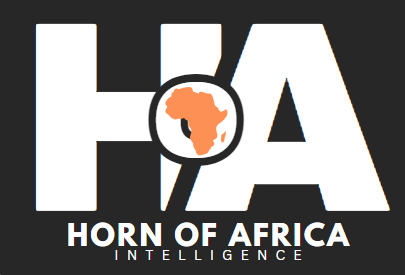For decades, Somalia and Ukraine have faced instability, war, and foreign interference. While the causes of their turmoil vary, one significant factor is often overlooked: their rich mineral resources. Both countries are believed to have vast deposits of valuable minerals, making them strategic targets in global politics. Russia’s invasion of Ukraine is partly driven by its desire to control Ukraine’s resources. Somalia, on the other hand, remains in chaos due to internal conflicts and a lack of strong governance, preventing it from tapping into its wealth. This article explores how mineral resources shape the fate of these two nations.
Ukraine: A Target for Russia
Ukraine is home to some of the world’s largest deposits of minerals. It has vast reserves of iron, titanium, uranium, and lithium. Lithium, a key component in batteries and electric vehicles, is becoming one of the world’s most sought-after resources.
Russia, a country rich in oil and gas, lacks significant lithium reserves. With the growing demand for clean energy, controlling lithium supplies is becoming more strategic. Ukraine’s Donbas region, a major industrial hub, is also rich in coal and other resources. Since 2014, Russia has sought to expand its control over Ukraine’s mineral wealth. The full-scale invasion in 2022 was not just about politics or history; it was also about securing economic and resource dominance.
By controlling Ukraine’s mineral-rich regions, Russia could reduce Europe’s access to critical materials. This would strengthen Moscow’s bargaining power and weaken Western economies. This resource-driven strategy is similar to how Russia uses its gas supplies to influence European countries.
Somalia: A Wealth of Untapped Resources
Somalia is believed to have significant mineral deposits, including lithium, tin, tantalum, and uranium. Geological surveys indicate that the northern regions, as well as parts of central Somalia, contain lithium–bearing pegmatites. However, unlike Ukraine, Somalia has not been able to develop its mining sector due to prolonged instability and weak governance.
For the past 34 years, Somalia has been in political disarray. Civil war, terrorism, and foreign interventions have crippled the nation. The lack of a strong central government has allowed warlords, militias, and extremist groups like Al-Shabaab to control parts of the country. These groups thrive in lawless environments and have no interest in developing the economy. Instead, they benefit from smuggling, piracy, and extortion.
Why Is Somalia in Chaos?
Somalia’s instability is not accidental. It is partly fueled by external forces that want to prevent the country from developing its resources. Foreign powers have long exploited Somalia’s weak state to gain access to its marine resources and strategic location along the Gulf of Aden. The presence of valuable minerals adds another layer to this exploitation.
Unlike Ukraine, which has a relatively strong government and military support from the West, Somalia lacks the infrastructure and security needed to protect its resources. Corruption, poor leadership, and lack of investment make it difficult for the country to attract serious mining companies. While Ukraine fights against Russian aggression, Somalia struggles against internal and external forces that want to keep it weak.
The Role of China and Other Global Players
China has been aggressively securing lithium supplies worldwide. It has invested heavily in lithium mines in Africa, South America, and Australia. If Somalia stabilises and begins mining operations, it could attract Chinese investment. However, this could lead to new geopolitical tensions as Western countries seek to counter China’s influence.
In Ukraine, China has also shown interest in its lithium reserves. Before the war, Chinese companies were negotiating deals to develop Ukraine’s lithium sector. The war disrupted these plans, but it is clear that global powers recognise the strategic value of these minerals.
What Can Somalia Learn from Ukraine?
Somalia and Ukraine share a common challenge: resource-driven geopolitical struggles. Ukraine’s ability to resist Russian aggression is partly due to its alliances with Western nations. Somalia lacks such strong partnerships. To break free from decades of chaos, Somalia must focus on building a stable government, strengthening security, and attracting responsible foreign investment.
Developing Somalia’s mining sector requires long-term planning. The government must ensure that mineral wealth benefits the population, not just elites or foreign companies. Transparency, strong institutions, and security reforms are essential. Somalia must also be wary of becoming a battleground for global powers seeking to exploit its resources.
The Future of Resource Wars
The global demand for lithium and other critical minerals will continue to shape international politics. Countries with these resources will either benefit from economic growth or suffer from geopolitical conflicts. Ukraine’s struggle against Russia highlights the dangers of being a resource-rich nation in a strategic location. Somalia, with its untapped wealth, must learn from Ukraine’s experience to avoid becoming another victim of resource-driven conflicts.
The world is entering an era where minerals are as important as oil and gas. Somalia and Ukraine both have the potential to be major players in this new economy. However, without stability and strategic planning, they risk remaining battlefields for global powers instead of benefiting from their own wealth.
Somalia has valuable natural resources like oil, gas, uranium, and rare minerals. Offshore oil reserves could be as large as Kuwait’s. If developed, Somalia could become a major energy supplier, which might threaten Gulf countries that depend on oil exports.
Gulf states like Saudi Arabia, the UAE, and Qatar have strong interests in Somalia. They do not want Somalia to become a competitor in the energy market. They also compete with each other for influence in the Horn of Africa. The UAE has invested in ports in Berbera and made deals with Somali regional governments. These deals often bypass the central government, making the country more divided.
Instability in Somalia benefits Gulf countries in several ways. Some Gulf states support regional administrations like Somaliland and Puntland to secure resource rights. There are reports that Gulf countries finance Somali politicians to control decision-making. The ongoing instability also helps groups like Al-Shabaab, as weak governance makes it easier for them to operate.
The UAE and Somalia have had conflicts over military training programs and political interference. Qatar, allied with Turkey, supports the Somali government to counter UAE and Saudi influence. This rivalry makes it harder for Somalia to pass laws on resource management.
Gulf countries claim they help Somalia through aid and counterterrorism efforts. However, their involvement often increases political divisions and dependency. Somalia needs strong governance to manage its resources and reduce foreign interference.
Somalia and Ukraine stand at a crossroads. Both nations possess valuable mineral resources that could transform their economies. Ukraine is fighting a war to protect its sovereignty and resources from Russian control. Somalia, meanwhile, remains trapped in instability, preventing it from benefiting from its mineral wealth.
The key lesson from Ukraine’s struggle is that resource-rich nations must be prepared to defend their wealth. Without strong governance, security, and international partnerships, minerals can become a curse rather than a blessing. Somalia has an opportunity to change its fate, but it must act decisively to secure its future in the global resource economy.








